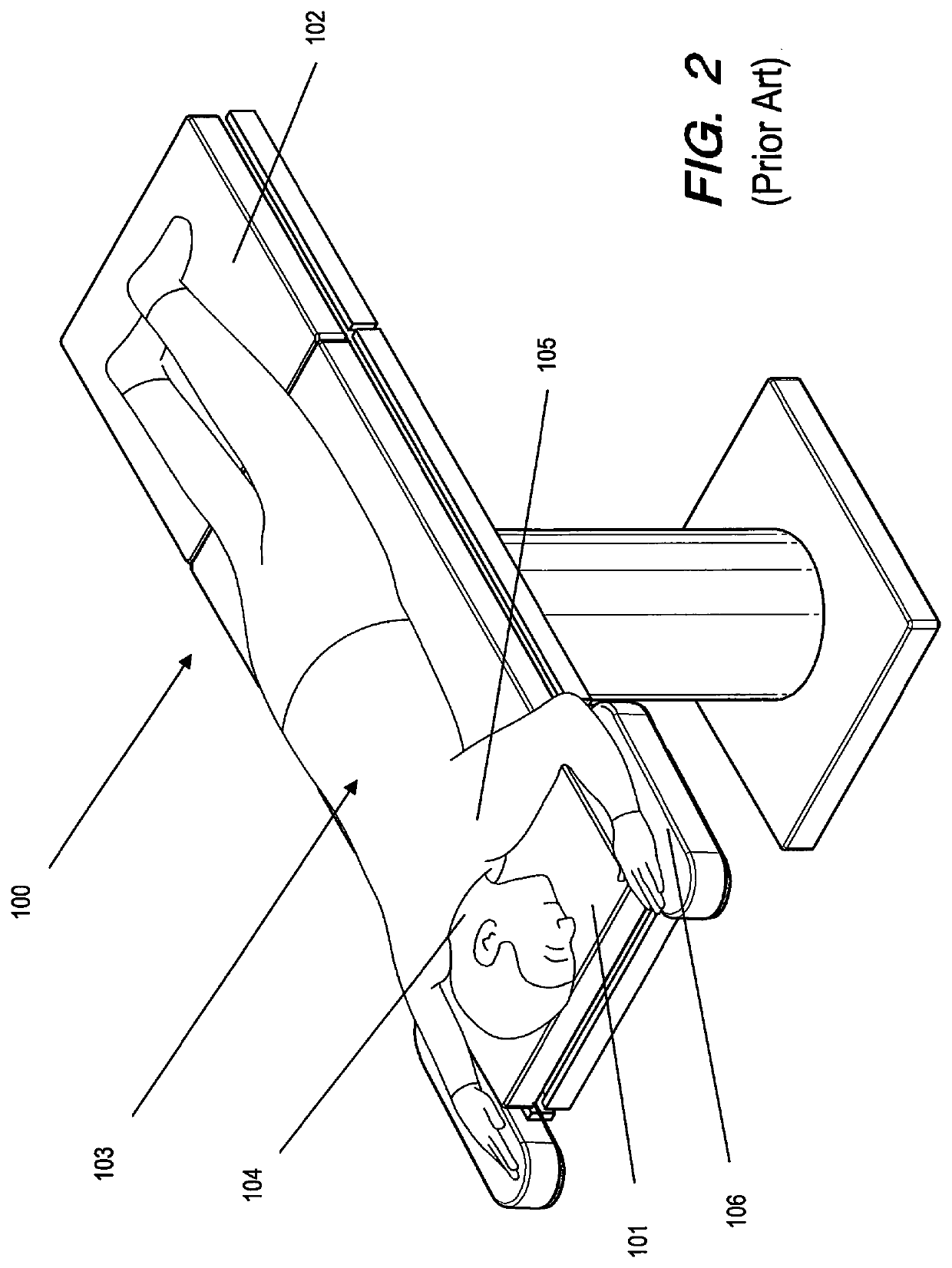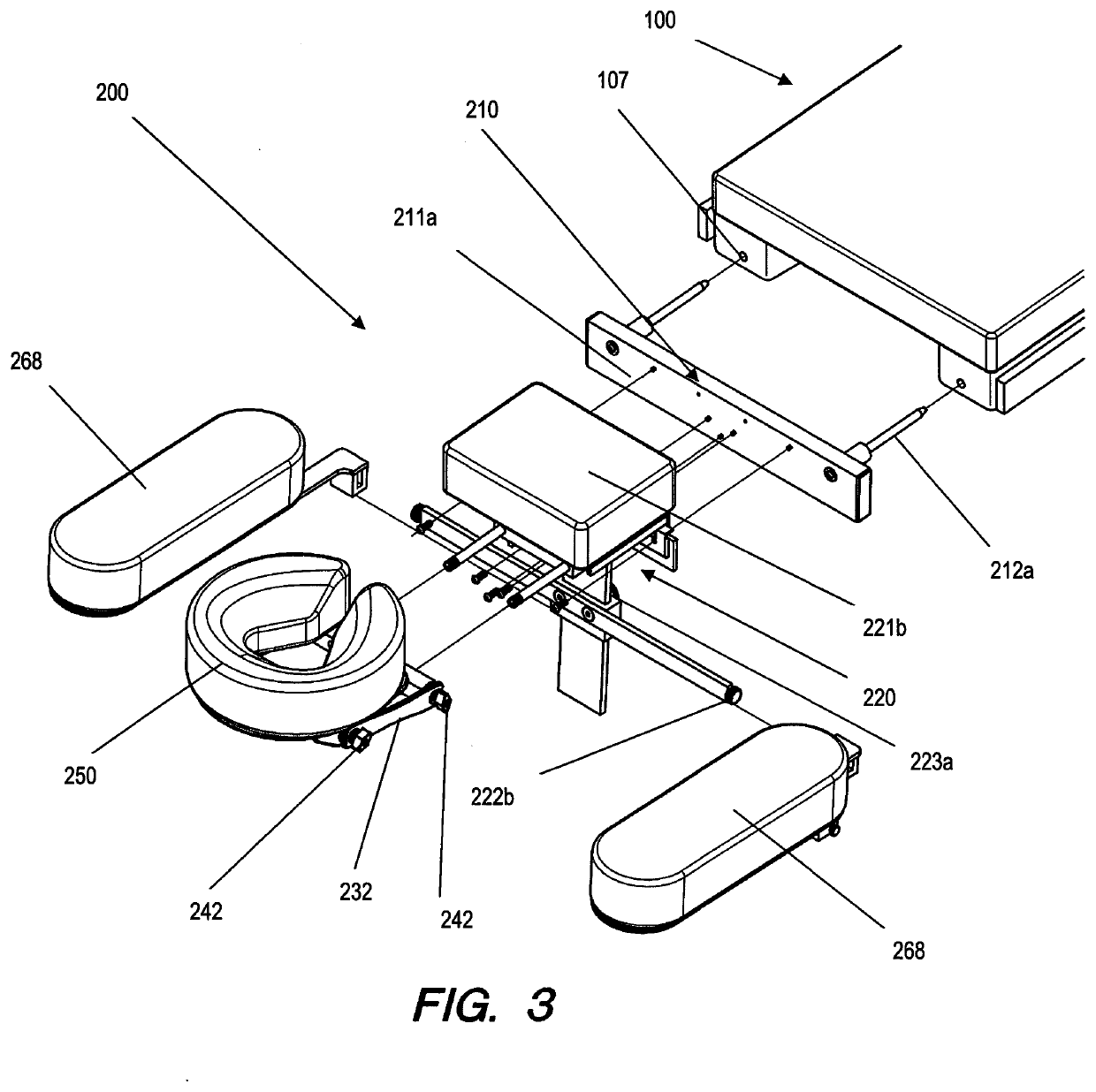Adaptive ergonomic positioning device
a positioning device and ergonomic technology, applied in the field of ergonomic positioning devices, can solve the problems of not allowing the patient's arms, lack of adjustability, and minimal adjustment, and achieve the effect of easy adjustment of the position during surgery
- Summary
- Abstract
- Description
- Claims
- Application Information
AI Technical Summary
Benefits of technology
Problems solved by technology
Method used
Image
Examples
Embodiment Construction
[0080]The AEPD 200 is designed so that an insert assembly 210 can be fabricated to be interchangeable with the head end table segment 101 of most brands and models of standard surgical tables 100 and surgical chairs 110. However, it should be noted that the AEPD 200 insert assembly 210 could also be easily further customized to connect via virtually any existing head end table segment attachment means 107 of any standard surgical table 100 or any standard surgical chair head end chair segment means 111. In the preferred embodiment described herein, the majority of the components of the AEPD 200 are made of 5052 and 6061 aluminum, while certain components are made from T-304 polished stainless steel for extra strength. Fabrication of the AEPD 200 generally involves cutting and welding various components but other means such as casting, stamping and CNC machining might also be used and are contemplated within the scope of this disclosure. Various bolts and screws, which provide the co...
PUM
 Login to View More
Login to View More Abstract
Description
Claims
Application Information
 Login to View More
Login to View More - R&D
- Intellectual Property
- Life Sciences
- Materials
- Tech Scout
- Unparalleled Data Quality
- Higher Quality Content
- 60% Fewer Hallucinations
Browse by: Latest US Patents, China's latest patents, Technical Efficacy Thesaurus, Application Domain, Technology Topic, Popular Technical Reports.
© 2025 PatSnap. All rights reserved.Legal|Privacy policy|Modern Slavery Act Transparency Statement|Sitemap|About US| Contact US: help@patsnap.com



